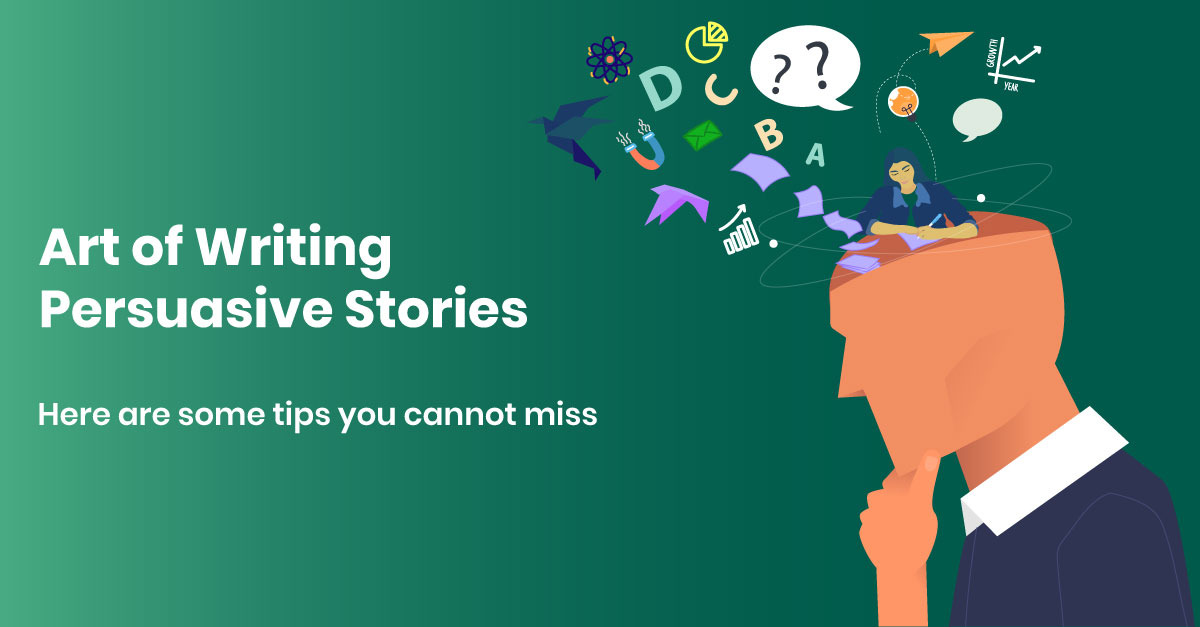Want to write persuasive stories? These tips will definitely help you.
Most of us would remember some of the conversations in the novel, Alice in Wonderland, especially the one where young Alice asked the Cheshire cat, “What road do I take?”
The cat asked,” Where do you want to go?”
“I don’t know,” Alice answered.
“Then,” said the cat. “It doesn’t really matter, does it?”
This dialogue always makes us smile because we can’t imagine taking roads, we do not know or going to places that are not on Google maps.
And yet, when we begin to write an article, many of us begin without any idea where to begin, where we are going or how to persuade our reader and how to conclude the narrative.
The Art of Persuasion
Persuasion, technically speaking, is the ability to get someone to believe in an idea or opinion.
Though it is often described as an art, persuasion is a science too. It combines the creativity of the arts, the logic of the sciences, the clear stream of reason of legalese, and the power of rhetoric of the poets, to convince someone about an idea.
Take, for example, you want to write a business article on a subject like: “Large corporate organizations should not be allowed to establish themselves in small towns as the local enterprises in the area could go out of business.”
The writer of an article on this theme can assume that everyone will agree with him because most people love the underdog, in this case, the unhappy locals.
On the contrary, the empathy of the readers may lie with the large corporation, as it can change the entire face of the community due to its financial prowess. The arrival of an enormous corporation in a small town will transform the population into becoming a more aspirational and hopeful set of people. The town will draw more investors to the region, raise the property prices and create overall growth and all-around prosperity.
The writer will therefore have to begin with an artist’s touch and paint a picture of running brooks, blue skies, open fields, kites soaring, children playing, local businesses flourishing.
Suddenly, the people in the big league and big businesses arrive and soon the streams turn grey with industrialization, the skies grow murky with pollution and the local businesses shut shop due to losses.
But these artistic embellishments need to be backed with facts, so the writer has to think scientifically, logically and rationally to convince his reader about his opinion on the matter.
The Right Hook
The beginning and the end of any narrative will hold the attention of the reader the most, so it is important to hook the reader at once.
For instance, if you begin with a statement like, “If you fail to plan, you are planning to fail. Businesses fail when leaders fail to plan,” you may have hooked some readers, but they may not be the ones you have in mind for the rest of your story.
In order to reach the right reader, you need to understand him or her. Who are you writing for? If it is for millennials planning to launch a business or for established business owners who are facing a roadblock?
Knowing your audience is the best way to start on any writing project.
Storytelling Pyramid
Structured writing needs clarity of thought, which is why the pyramid method of writing a business article is a good place to begin.
In journalism, the inverted pyramid is mandatory, since the most important information has to be given to the reader first. This will include the 5 Ws- “Who” (who is it about), “What” (what is it on), “Where” (where is it happening), “When” (the timeline of the event) and “Why” (the reason for the article).
Try the inverted pyramid for a business article, especially if it is a news piece.
For example, if your topic is “This Indian Entrepreneur will bring the Next Big Thing to the world In the E-Commerce Space” – you need to begin with all the details of this incredible entrepreneur and why you think he will revolutionize the business world. Answer the five ‘Ws” right away and the scope of the business. The rest of the article will analyze the market trends at present where the incredible entrepreneur can influence, the problem areas that he can address, and build up the narrative to a fitting conclusion.
Argue and Offer Case Studies
If your business article is on a debatable subject, you need to think like a lawyer. Present your case, draw up your arguments, have examples to back up your claims, and stand by your idea.
For instance, if you were to write on a topic like, “In our digital age is Word-of-Mouth still a thing in the business world?” – you would need to begin with the premise that today, most youngsters don’t talk on the phone, they only “text” each other. Adults rely on Instagram and FB news, more than the newspapers and social media is the new word-of-mouth channel of the times.
It’s a Wrap: Repeat, Reiterate, Redirect
Don’t negate the power of repetition. Most readers will not clearly remember what you began with when they reach the end of your story.
You need to reiterate your views, summarize your points, wrap up your thoughts, and show them what the future looks like in the context of your story.
In Conclusion
When you come to the end of your article, make sure you summarize the salient themes, without repeating all your points verbatim. Your last few sentences should take the reader forward and present a call to action. An effective concluding paragraph should leave your reader with a daring challenge or a new idea and establish your stance on the subject once more.


